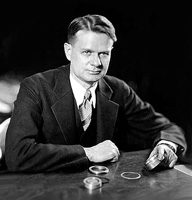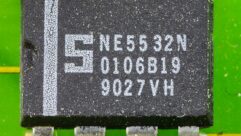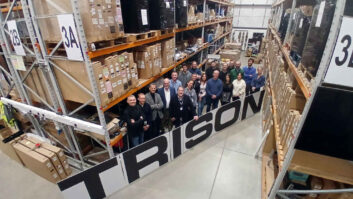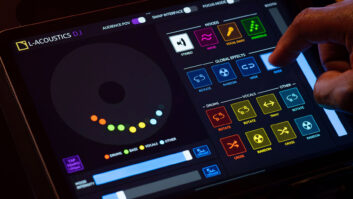

E.C. Wente: An Unsung Audio Pioneer Gets His Due
Jan 6, 2011 12:00 PM,
By George Petersen
Edward Charles “E.C.” Wente
Ask any audio pro what he knows about Edward Christopher “E.C.” Wente, and you’ll likely get a blank stare. This is unfortunate, because Wente made an enormous impact on live sound technologies that continues to this day.
Working at Western Electric in 1914, Wente’s first assignments included improving the quality of telephone audio. His 1916 patent for a “telephone transmitter” spelled out what we now call the condenser microphone. A year later, he described an improved version capable of reproducing beyond 15kHz—astonishing in an era when most 78rpm acoustic recordings topped out around 3kHz.
Rise of the loudspeaker
In 1926, with the development of talking motion pictures underway, the industry suddenly needed loudspeakers, with an emphasis on the word “loud.” A year before, two General Electric engineers (Chester Rice and Edward Kellogg) had unveiled the modern dynamic cone loud¬speaker—an important step in the right direction. However, with the low-power amplifiers available at the time, any hope of providing high-output reproduction was impossible.
Given that premise, Wente worked with fellow Bell Telephone Laboratories engineer Albert L. Thuras on a radical solution. Their 1926 patent app described an electroacoustical device using a “light piston-type diaphragm driven by a light rigid coil.” The diaphragm/voice coil was set within a dense electromagnetic structure, fed a signal from an amplifier, and mounted onto a horn.
The result was the Western Electric 555W “receiver,” and the high-frequency compression driver was born. It’s surprising how close the 555W came to modern designs and how little things have changed since then. The original Wente-Thuras design featured a 0.002in.-thin aluminum dome diaphragm with a corrugated surround offering strength, stiffness, and flexibility; a phase plug; and a threaded horn mount for fitting on a variety of horns. The horn of choice was the WE Model 12A, an exponentially tapered design that was 67in. tall, with a 45″x45″ throat opening and an 11ft. overall pathway providing a response down to 80Hz. Although it was bulky, the high efficiency of the driver/horn combo could achieve high SPLs from low-powered amps and could be used alone or combined with cone woofers for extended low-frequency performance.
Wente and Thuras later teamed up to develop the first commercial dynamic microphone: the Western Electric 618A. With its thin duralumin diaphragm and new cobalt-steel alloy magnet, the omnidirectional 618A offered high output and a respectable 10kHz bandwidth. With its ease of operation and tough, compact housing, it remained in use for years among PA, film, and broadcast users. It was also the mic of choice for Franklin Delano Roosevelt’s famous Fireside Chat radio addresses.
Gone, but not forgotten
During his long tenure at Western Electric/Bell Labs, up until 1954, Wente’s innovations were many, also including a light valve for creating optical film soundtracks; the multicell horn; and major studies in auditory perspective, anechoic room design, and acoustical wall materials. Wente was granted a total of 36 patents and was awarded a Scientific and Engineering Academy Award in 1936 for his multicell horn design. Pretty amazing for a guy hardly anyone’s ever heard of.
This month, I have the honor of inducting E.C. Wente into the TECnology Hall of Fame (presented by the TEC Foundation). The ceremony takes place at 4 p.m., Jan. 15, 2011, in Room 204B at the Winter NAMM show. All NAMM attendees are welcome.
George Petersen is also the director of the TECnology Hall of Fame.









